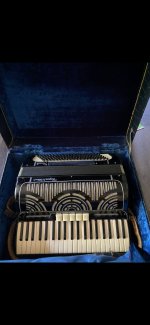meSSican80
Newbie
Hey all! Out here in Auburn, CA and very intrigued with the accordion. Really love the sound of Corrido style Mexican accordion but happy to start learning on a regular chromatic model. Have to say I am kinda frustrated finding something good for not a lot. Quickly learned that this is a very expensive insturment...that coming from a drummer where a full kit can cost a few thousand.
I have checked all the usual suspects of accordion shops but not sure I want to invest a large amount (not a knock on the retailers as I understand what goes into selling legitimate used accordions). Also, nothing too close aside from a quick 5hr round trip to the closest accordion shop....that I know of (Smyths & SJ Accordion Repair).
I have mainly been looking for piano style but wondering if a chromatic button accordion would be a good starter. Aside from drumming I have no other real music experience. I also found a Hohner Bravo III 120 for a good price but reading that these very expensive Chinese models aren't widely recommended, and also it seems to be a pretty big model.
Any feedback or encouragement would be appreciated. Planning on learning from books and online for now.
Thanks!!
I have checked all the usual suspects of accordion shops but not sure I want to invest a large amount (not a knock on the retailers as I understand what goes into selling legitimate used accordions). Also, nothing too close aside from a quick 5hr round trip to the closest accordion shop....that I know of (Smyths & SJ Accordion Repair).
I have mainly been looking for piano style but wondering if a chromatic button accordion would be a good starter. Aside from drumming I have no other real music experience. I also found a Hohner Bravo III 120 for a good price but reading that these very expensive Chinese models aren't widely recommended, and also it seems to be a pretty big model.
Any feedback or encouragement would be appreciated. Planning on learning from books and online for now.
Thanks!!

